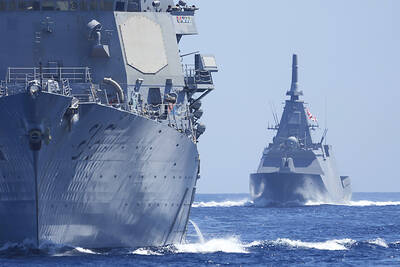A sophisticated Israeli spy satellite plummeted into the Mediterranean Sea shortly after launch, dealing a blow to Israeli efforts to keep an eye on Iran's alleged nuclear weapons program.
"An unsuccessful attempt was made to launch into orbit a remote sensing satellite," the defense ministry said in a terse announcement Monday, just after the top secret launch from the seaside Palmachim air force base in southern Israel.
The Ofek-6 satellite fell into the sea near the port city of Ashdod. No injuries were reported.
However, other spy satellites are still in orbit, taking high-resolution pictures and relaying them to Israel.
Israel, a world leader in satellite technology, relies heavily on its space-based cameras to monitor activities in Arab countries. The Ofek-5 satellite, launched in 2002, overflies Iran, Iraq, and Syria.
Israel hoped the Ofek-6 would enhance its coverage of these countries, in particular Iran, experts said.
"Israel wanted to use this [satellite] to monitor the Iranian nuclear developments and also things like their surface-to-surface missiles," said military expert Shlomo Brom, a retired general.
Defense Minister Shaul Mofaz said a replacement for Ofek-6 would be launched. "It might be with a delay, but it will go up," he said, without giving a date.
"We have to be on the satellite map," he said. Monday's failure cost an estimated $US50 million.
Israel believes Iran is moving forward with a nuclear weapons program and has intensified efforts to isolate Tehran diplomatically.
On Monday, Israeli Foreign Minister Silvan Shalom again asked his visiting Russian counterpart, Sergey Lavrov, to help contain Iranian nuclear ambitions.
Lavrov replied that Russia's nuclear cooperation with Iran was under the regulations of the International Atomic Energy Agency and did not pose a threat.

A fire caused by a burst gas pipe yesterday spread to several homes and sent a fireball soaring into the sky outside Malaysia’s largest city, injuring more than 100 people. The towering inferno near a gas station in Putra Heights outside Kuala Lumpur was visible for kilometers and lasted for several hours. It happened during a public holiday as Muslims, who are the majority in Malaysia, celebrate the second day of Eid al-Fitr. National oil company Petronas said the fire started at one of its gas pipelines at 8:10am and the affected pipeline was later isolated. Disaster management officials said shutting the

US Vice President J.D. Vance on Friday accused Denmark of not having done enough to protect Greenland, when he visited the strategically placed and resource-rich Danish territory coveted by US President Donald Trump. Vance made his comment during a trip to the Pituffik Space Base in northwestern Greenland, a visit viewed by Copenhagen and Nuuk as a provocation. “Our message to Denmark is very simple: You have not done a good job by the people of Greenland,” Vance told a news conference. “You have under-invested in the people of Greenland, and you have under-invested in the security architecture of this

UNREST: The authorities in Turkey arrested 13 Turkish journalists in five days, deported a BBC correspondent and on Thursday arrested a reporter from Sweden Waving flags and chanting slogans, many hundreds of thousands of anti-government demonstrators on Saturday rallied in Istanbul, Turkey, in defence of democracy after the arrest of Istanbul Mayor Ekrem Imamoglu which sparked Turkey’s worst street unrest in more than a decade. Under a cloudless blue sky, vast crowds gathered in Maltepe on the Asian side of Turkey’s biggest city on the eve of the Eid al-Fitr celebration which started yesterday, marking the end of Ramadan. Ozgur Ozel, chairman of the main opposition Republican People’s Party (CHP), which organized the rally, said there were 2.2 million people in the crowd, but

JOINT EFFORTS: The three countries have been strengthening an alliance and pressing efforts to bolster deterrence against Beijing’s assertiveness in the South China Sea The US, Japan and the Philippines on Friday staged joint naval drills to boost crisis readiness off a disputed South China Sea shoal as a Chinese military ship kept watch from a distance. The Chinese frigate attempted to get closer to the waters, where the warships and aircraft from the three allied countries were undertaking maneuvers off the Scarborough Shoal — also known as Huangyan Island (黃岩島) and claimed by Taiwan and China — in an unsettling moment but it was warned by a Philippine frigate by radio and kept away. “There was a time when they attempted to maneuver